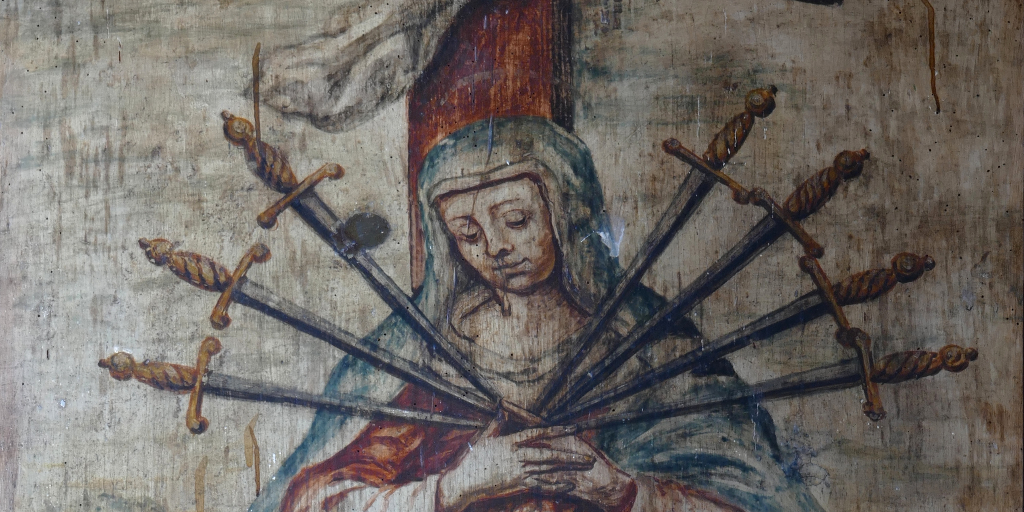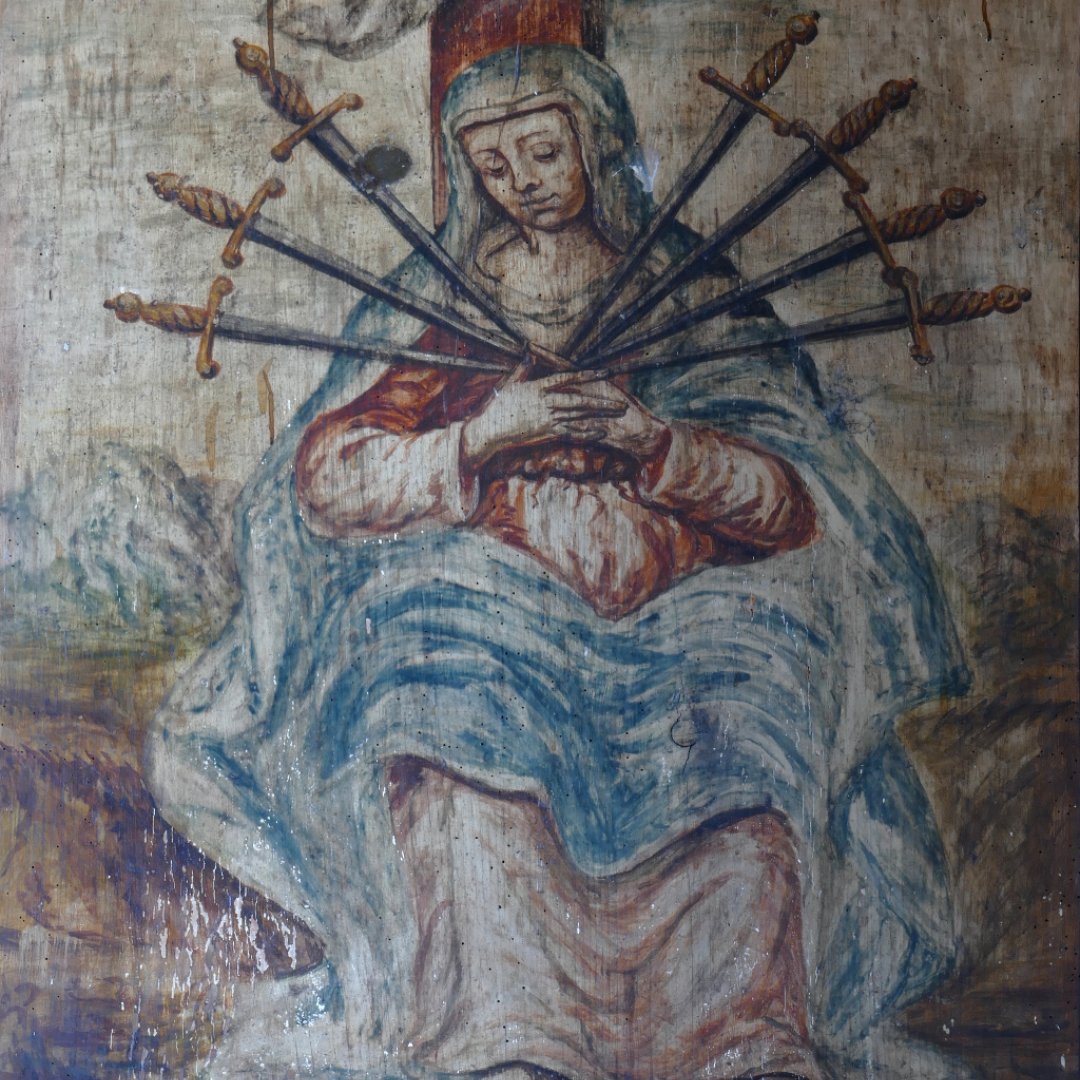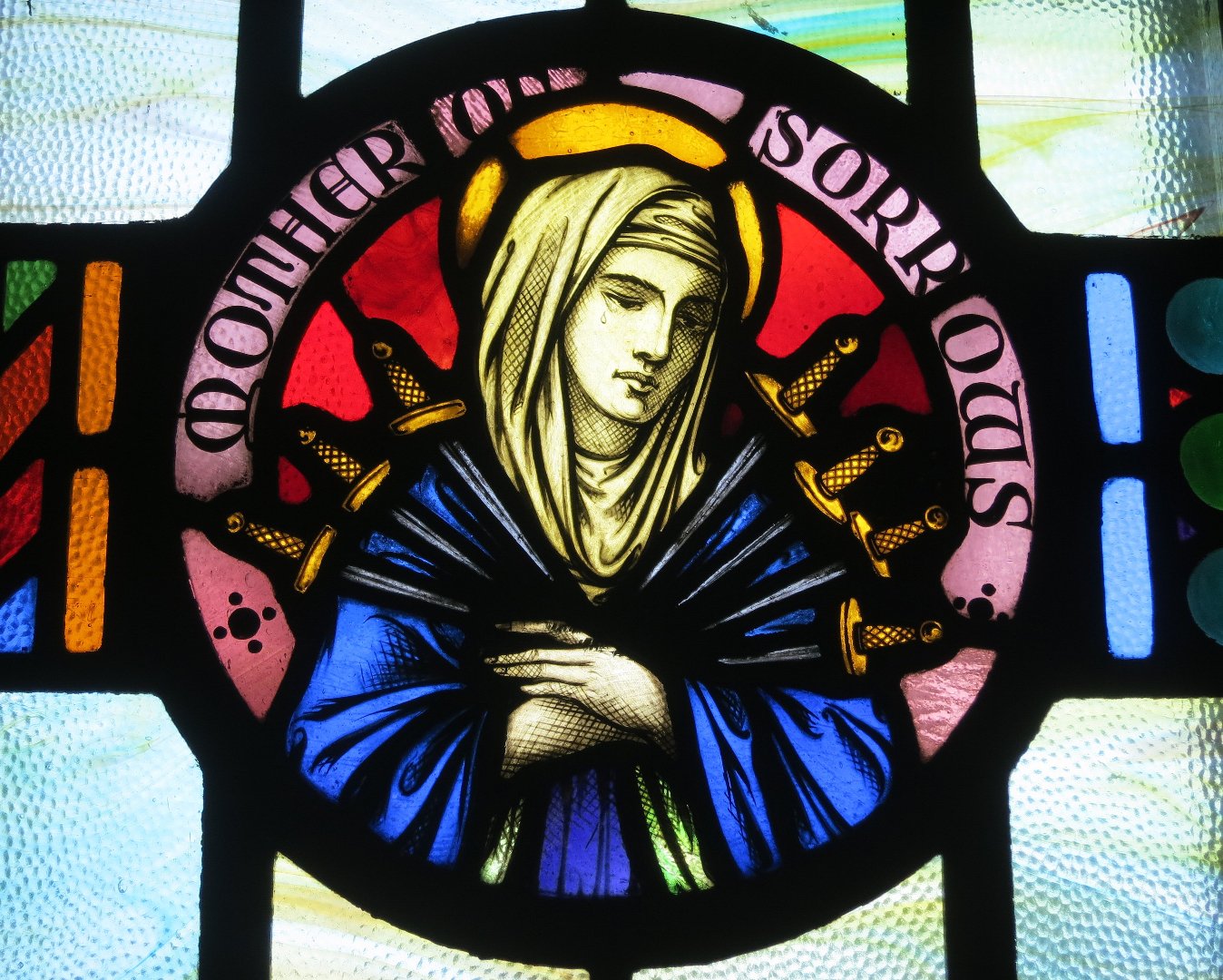
Alexis Dallara-Marsh explains how Mary can be our model in times of suffering.
Mary suffered infinitely as she had to watch her son and her God die on Calvary. In fact, Mary’s very name has roots in the Hebrew word “marah” meaning “bitterness” or “bitter sea.” The word “marah” is seen in Exodus where the Israelites come to a place Marah where the water was bitter, and again, appears when Naomi says “Call me no longer Naomi, call me Mara, for the Almighty has dealt bitterly with me.”
The Seven Sorrows are events in the life of the Blessed Virgin Mary that are a popular devotion which incorporate prayer using a special rosary comprised of seven "decades" containing seven beads each, focusing on the following events:
The First Sorrow: The Prophecy of Simeon (Luke 2:25-35)
The Second Sorrow: The flight into Egypt (Matthew 2:13-15)
The Third Sorrow: The Child Jesus Lost in the Temple (Luke 2: 41-50)
The Fourth Sorrow: Mary meets Jesus carrying the cross (Luke 23: 27-29)
The Fifth Sorrow: Mary at the foot of the cross (John 19: 25-30.)
The Sixth Sorrow: Mary receives the body of Jesus (Psalm 130.)
The Seventh Sorrow: Mary witnesses the burial of Jesus (Luke 23: 50-56.)
These truly were sad burdens for Mary to bear, and it is said that each of these sorrows pierced Mary’s heart like a sword. Our Lady of Sorrows is commonly depicted with 7 swords in her heart. And yet, it is through these trials that Mary becomes not just the mother of Jesus, but of all the church. “Behold, your Mother” is among Jesus’s last words.

Mary’s faith is truly evident in that she survived the sword of grief. She was steadfast in her fiat. She never once wavered in her devotion to God, though she was exposed to so many trials of deep grief and loss.
In her apparitions in the 1980s in Rwanda, Our Lady of Kibeho recommended that people pray the Chaplet (or Rosary) of the Seven Sorrows to obtain the favor of repentance. One of the visionaries during Our Lady’s appearance declared Our Lady spoke of the need for suffering, to “bear our sufferings every day,” and that no one enters heaven without suffering.
If we imitate her faith, we too will survive whatever wounds this hard world inflicts on us.
O God, who in this season
give your Church the grace
to imitate devoutly the Blessed Virgin Mary
in contemplating the Passion of Christ,
grant, we pray, through her intercession,
that we may cling more firmly each day
to your Only Begotten Son
and come at last to the fullness of his grace.
(Roman Missal, alternate collect, Friday of the Fifth Week of Lent).
Pope John Paul II wrote,
In the light of Mary, the Church sees [in the face of women] the reflection of a beauty which mirrors the loftiest sentiments of which the human heart is capable: the self-offering totality of love; the strength capable of bearing the greatest sorrows; limitless fidelity, tireless devotion to work; the ability to combine penetrating intuition with words of support and encouragement ...The Blessed Virgin persevered in her union with her Son unto the cross … joining herself with his sacrifice in her mother’s heart.” (Lumen Gentium)
It is said that death is a terrible enemy, and it wounds all of us in one way or another. In the model of our Lady of Sorrows, we should continually give over such crosses to God. Such trials can be used to bring us closer to our loving family in Heaven. Being united in Mary’s fiat, we can finally begin to be enveloped by the truly joyous moment when Mary says, “Let it be done to me according to your word.”

Copyright 2021 Alexis Dallara-Marsh
Images (from top): copyright Ralph Hammann (Wikimedia Commons); St. Aloysius Catholic Church, Bowling Green, OH, CC BY SA 4.0 (Wikimedia Commons)
About the Author

Alexis Dallara-Marsh
Dr. Alexis Dallara-Marsh is a board-certified neurologist who practices in Bergen County, NJ. She is a wife to her best friend, Akeem, and a mother of four little ones on Earth, plus two others in Heaven above.


.png?width=1806&height=731&name=CatholicMom_hcfm_logo1_pos_871c_2728c%20(002).png)
Comments